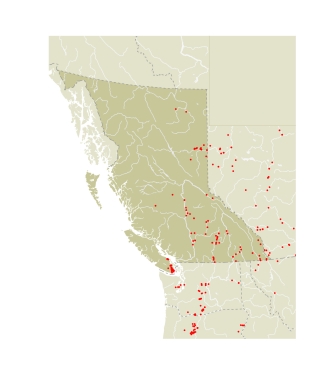Adults are on the wing from late April to early August, with peak flight occurring in the last third of June. Eggs are laid singly on the under surface of leaves. In California the larvae mature by fall, overwinter as larvae, pupate in March, and emerge as adults in May. In the east the larvae pupate from late July to September, and there is a partial second brood. The pupae overwinter. There is one brood in British Columbia. The larvae have been recorded on a number of plants: in the east on Trifolium pratense, T. repens, Lespedeza capitata, and L. hirta; in California on Amorpha californica. In Colorado the Northern Cloudywing has been observed ovipositing on Lathyrus sp. (Scott 1992). Trifolium sp. and Lathyrus sp. occur in BC.
|
|
